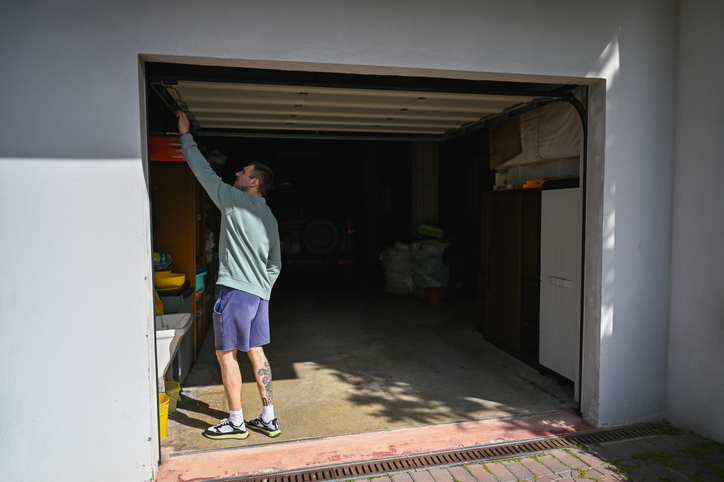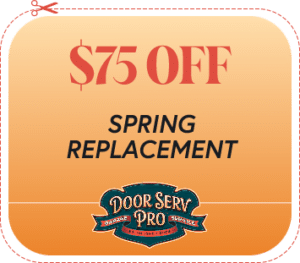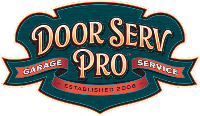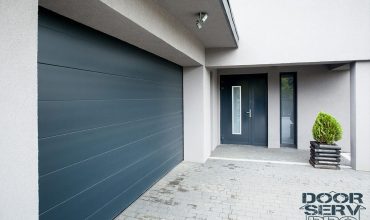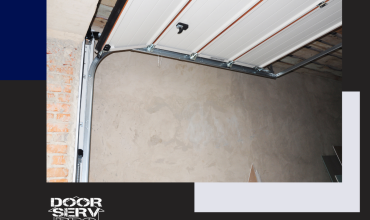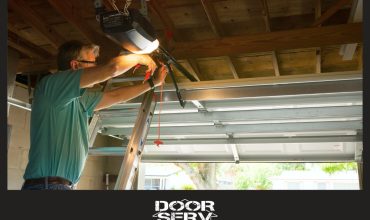When selecting a commercial garage door, business owners often choose between sectional and roll-up doors. Each type of commercial garage door installation has distinct advantages, so factors such as space requirements, durability, maintenance, and security must be considered before making a decision. Whether you’re outfitting a warehouse, automotive shop, or industrial facility, understanding the differences between these two popular garage door types can help you choose the best option for your needs.
1. Design and Structure Differences
Sectional and roll-up garage doors have different designs that impact their functionality and installation. Sectional doors are composed of horizontal panels that move along tracks and rest parallel to the ceiling when open. Roll-up doors, on the other hand, consist of interlocking slats that coil into a compact drum above the door opening. This fundamental structural difference affects space usage, maintenance, and durability. Businesses with limited ceiling clearance often prefer roll-up doors, while those needing wide openings may opt for sectional doors.
2. Space and Clearance Considerations
One of the biggest differences between sectional and roll-up doors is their space requirements. Sectional doors require overhead clearance to accommodate their horizontal panels when opened, which can be a concern in buildings with low ceilings. Roll-up doors, however, take up minimal overhead space since they coil into a drum above the doorway. This makes roll-up doors ideal for businesses that need to maximize vertical space, such as warehouses and storage facilities with racking systems.
3. Durability and Material Choices
Both sectional and roll-up doors are designed for commercial use, but their durability varies based on materials and construction. Sectional doors are often made of steel, aluminum, or fiberglass, providing good insulation and strength. Roll-up doors, typically constructed from heavy-duty steel or aluminum, are known for their high durability and resistance to impact. Roll-up doors are a great choice for businesses in high-traffic areas where doors may experience frequent opening and closing.
4. Security Features and Protection
Security is a top priority for any commercial property, and both types of doors offer varying levels of protection. Sectional doors can be equipped with reinforced panels, security locks, and smart access systems for added safety. Roll-up doors, however, are often considered more secure due to their solid, compact design and fewer entry points for intruders. The interlocking slats in roll-up doors provide a stronger barrier, making them an excellent choice for businesses that prioritize security.
5. Maintenance and Repair Needs
Maintenance requirements can influence the long-term cost and functionality of a garage door. Sectional doors have multiple moving parts, including hinges, tracks, and rollers, which may require regular lubrication and occasional replacement. Roll-up doors, with fewer mechanical components, generally have lower maintenance needs and fewer chances of breakdowns. However, if a roll-up door does get damaged, repairs can be more complex since individual slats may need to be replaced rather than simple panel adjustments.
7. Insulation and Energy Efficiency
Businesses looking to improve energy efficiency should consider the insulation properties of their garage doors. Sectional doors can be equipped with insulated panels that help regulate indoor temperatures, reducing heating and cooling costs. Roll-up doors also come with insulated options, but they may not provide the same level of thermal protection as sectional doors. If your business relies on temperature-controlled environments, an insulated sectional door may be the better option.
7. Installation Complexity and Costs
Installation processes for sectional and roll-up doors differ significantly. Sectional doors require a track system that runs along the ceiling, making installation more complex and potentially time-consuming. Roll-up doors, in contrast, involve a simpler installation process since they only require a mounting drum and side tracks. While roll-up doors may have higher upfront material costs, their simpler installation can result in lower labor expenses. Business owners should weigh both installation complexity and long-term maintenance costs when making their decisions.
8. Ideal Applications for Each Door Type
Different industries have varying needs, making it essential to choose the right door for specific applications. Sectional doors are commonly used in automotive shops, fire stations, and loading docks where wide openings and insulation are important. Roll-up doors are preferred in warehouses, self-storage facilities, and industrial buildings where space efficiency and security are top priorities. Understanding your business’s specific requirements will help determine which door type is the best fit.
Both sectional and roll-up commercial garage doors offer unique benefits, and choosing the right one depends on your business’s space, security, insulation, and maintenance needs. Sectional doors are ideal for businesses that need wide openings and insulation, while roll-up doors provide durability and space efficiency. By evaluating these factors, business owners can make an informed decision that enhances both functionality and security.
Do you need help choosing the right option for a commercial garage door installation? Contact our experts at Door Serv Pro at (540) 450-6749 today for professional guidance and installation services!


